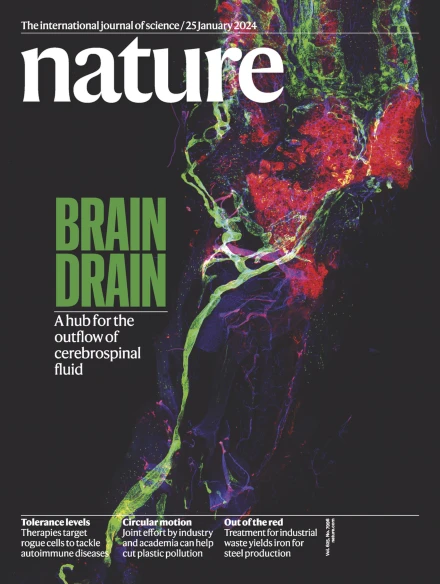Millimetre-scale bioresorbable optoelectronic systems for electrotherapy
IF 50.5
1区 综合性期刊
Q1 MULTIDISCIPLINARY SCIENCES
引用次数: 0
Abstract
Temporary pacemakers are essential for the care of patients with short-lived bradycardia in post-operative and other settings1–4. Conventional devices require invasive open-heart surgery or less invasive endovascular surgery, both of which are challenging for paediatric and adult patients5–8. Other complications9–11 include risks of infections, lacerations and perforations of the myocardium, and of displacements of external power supplies and control systems. Here we introduce a millimetre-scale bioresorbable optoelectronic system with an onboard power supply and a wireless, optical control mechanism with generalized capabilities in electrotherapy and specific application opportunities in temporary cardiac pacing. The extremely small sizes of these devices enable minimally invasive implantation, including percutaneous injection and endovascular delivery. Experimental studies demonstrate effective pacing in mouse, rat, porcine, canine and human cardiac models at both single-site and multi-site locations. Pairing with a skin-interfaced wireless device allows autonomous, closed-loop operation upon detection of arrhythmias. Further work illustrates opportunities in combining these miniaturized devices with other medical implants, with an example of arrays of pacemakers for individual or collective use on the frames of transcatheter aortic valve replacement systems, to provide unique solutions that address risks for atrioventricular block following surgeries. This base technology can be readily adapted for a broad range of additional applications in electrotherapy, such as nerve and bone regeneration, wound therapy and pain management. A millimetre-scale bioresorbable optoelectronic system with an onboard power supply and a wireless, optical control mechanism is developed for general applications in electrotherapy and specific uses in temporary cardiac pacing.


用于电疗的毫米级生物可吸收光电系统
临时起搏器对于术后和其他情况下短暂性心动过缓患者的护理至关重要1,2,3,4。传统装置需要侵入性开胸手术或侵入性较小的血管内手术,这两种手术对儿童和成人患者都具有挑战性5,6,7,8。其他并发症9,10,11包括感染、撕裂和心肌穿孔的风险,以及外部电源和控制系统的移位。在这里,我们介绍了一种毫米级的生物可吸收光电系统,该系统具有板载电源和无线光学控制机制,具有广泛的电疗能力和临时心脏起搏的特定应用机会。这些装置的极小尺寸使微创植入成为可能,包括经皮注射和血管内输送。实验研究表明,在小鼠、大鼠、猪、犬和人类心脏模型中,单位点和多位点的起搏都是有效的。与皮肤接口无线设备配对,可以在检测心律失常时进行自主闭环操作。进一步的工作表明,将这些小型设备与其他医疗植入物结合起来的机会,例如在经导管主动脉瓣置换术框架上单独或集体使用的起搏器阵列,为解决手术后房室传导阻滞的风险提供独特的解决方案。这种基础技术可以很容易地适应于电疗中的广泛附加应用,例如神经和骨骼再生,伤口治疗和疼痛管理。
本文章由计算机程序翻译,如有差异,请以英文原文为准。
求助全文
约1分钟内获得全文
求助全文
来源期刊

Nature
综合性期刊-综合性期刊
CiteScore
90.00
自引率
1.20%
发文量
3652
审稿时长
3 months
期刊介绍:
Nature is a prestigious international journal that publishes peer-reviewed research in various scientific and technological fields. The selection of articles is based on criteria such as originality, importance, interdisciplinary relevance, timeliness, accessibility, elegance, and surprising conclusions. In addition to showcasing significant scientific advances, Nature delivers rapid, authoritative, insightful news, and interpretation of current and upcoming trends impacting science, scientists, and the broader public. The journal serves a dual purpose: firstly, to promptly share noteworthy scientific advances and foster discussions among scientists, and secondly, to ensure the swift dissemination of scientific results globally, emphasizing their significance for knowledge, culture, and daily life.
 求助内容:
求助内容: 应助结果提醒方式:
应助结果提醒方式:


